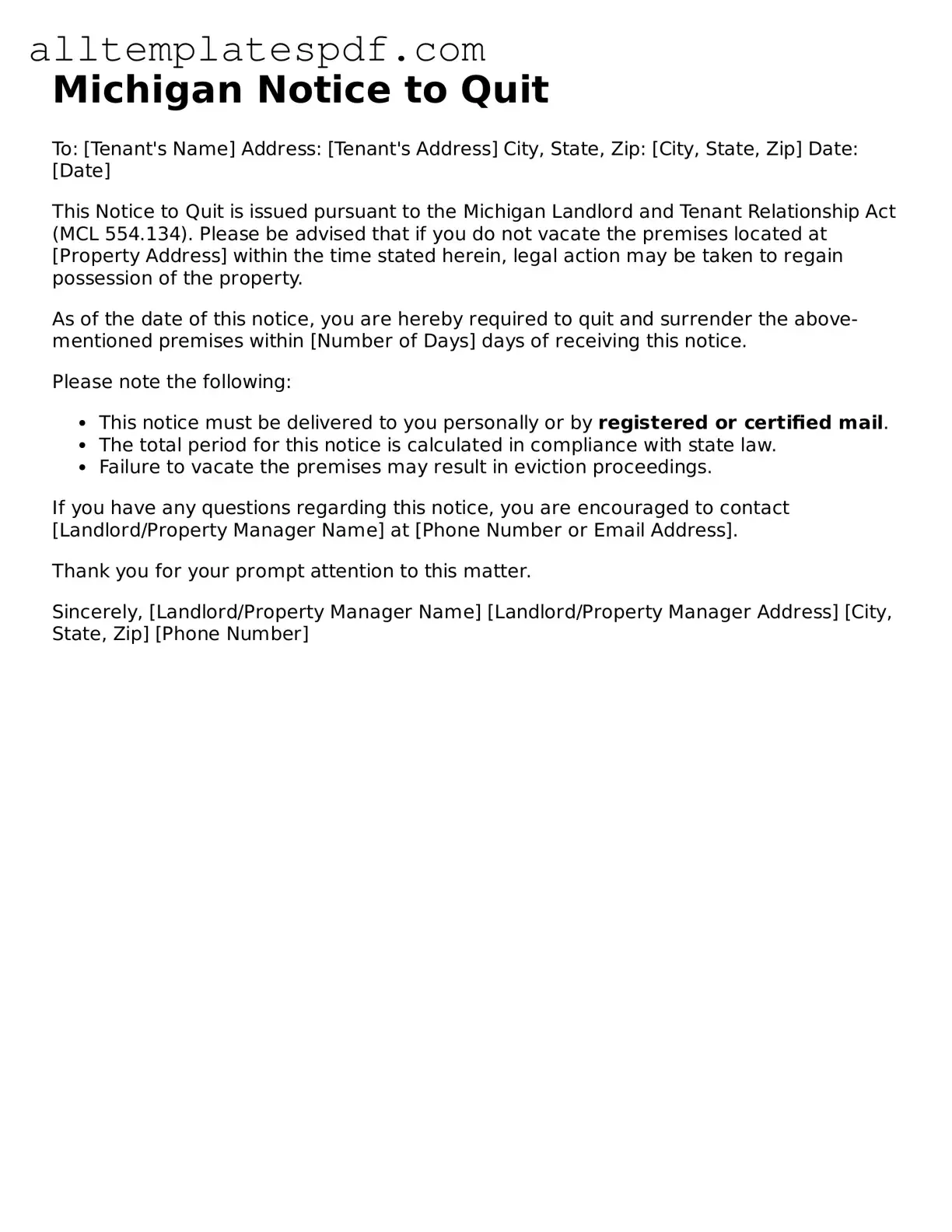Blank Notice to Quit Template for the State of Michigan
The Michigan Notice to Quit form serves as a formal notification from a landlord to a tenant, indicating the need to vacate the rental property. This document is crucial in the eviction process, as it outlines the reasons for termination and the time frame within which the tenant must respond. Understanding this form is essential for both landlords and tenants to navigate their rights and responsibilities effectively.
To get started on filling out the form, click the button below.
Open Editor
